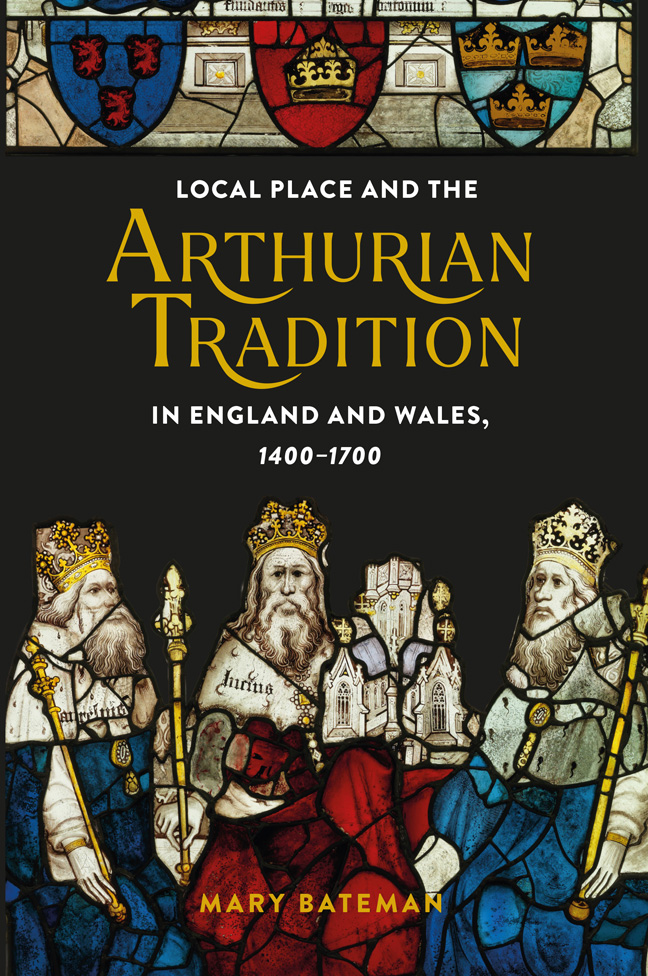Book contents
- Frontmatter
- Contents
- List of Illustrations
- Acknowledgements
- Introduction: Place and the defence of Arthur
- 1 ‘Thise were his places and his habitacions’: Arthur in situ in the fifteenth century
- 2 Contentious places: Reconciling Arthurian places in the fifteenth century
- 3 The best of the west: John Leland's West Country Arthur
- 4 Locating Arthur in England and Wales: John Leland, John Prise, and Elis Gruffydd
- 5 Placing Arthur in William Camden's Britannia
- Coda: Arthur's local renaissance?
- Bibliography
- Index
- Miscellaneous Endmatter
1 - ‘Thise were his places and his habitacions’: Arthur in situ in the fifteenth century
Published online by Cambridge University Press: 21 February 2024
- Frontmatter
- Contents
- List of Illustrations
- Acknowledgements
- Introduction: Place and the defence of Arthur
- 1 ‘Thise were his places and his habitacions’: Arthur in situ in the fifteenth century
- 2 Contentious places: Reconciling Arthurian places in the fifteenth century
- 3 The best of the west: John Leland's West Country Arthur
- 4 Locating Arthur in England and Wales: John Leland, John Prise, and Elis Gruffydd
- 5 Placing Arthur in William Camden's Britannia
- Coda: Arthur's local renaissance?
- Bibliography
- Index
- Miscellaneous Endmatter
Summary
Thenne to procede forth in thys sayd book, whyche I dyrecte vnto alle noble prynces, lordes and ladyes, gentylmen or gentylwymmen, that desyre to rede or here redde of the noble and Ioyous hystorye of the grete conquerour and excellent kyng, Kyng Arthur, somtyme kyng of thys noble royalme thenne callyd Brytaygne […]
William Caxton's preface to his edition of Thomas Malory's Morte Darthur sets two complementary iterations of Arthur side-by-side. The first is Arthur the imperial symbol, the ‘grete conquerour and excellent kyng […] of thys noble royalme thenne callyd Brytaygne’. The second is the Arthur of local places. On the one hand, Caxton tells us that he has been implored to write the history and deeds of Arthur by an unnamed array of ‘noble and dyuers gentylmen of thys royame’ for reasons of national pride. Caxton's unnamed petitioners, upset that Caxton has ignored Arthur in favour of other Worthies in his prior publications, argue that he should have instead prioritised Arthur as ‘a man borne wythin this royame and kyng and emperour of the same’. After Caxton's retort that there are some men who think ‘there was no suche Arthur’, the unnamed gentlemen defend their position by turning to a number of Arthurian sites and objects across the English and Welsh landscape:
Fyrst, ye may see his sepulture in the monasterye of Glastyngburye […] And in dyuers places of Englond many remembraunces ben yet of hym and shall remayne perpetually, and also of his knyghtes: first, in the abbey of Westmestre, at Saynt Edwardes shrine, remayneth the prynte of his seal in reed waxe […] item, in the castel of Douer ye may see Gauwayns skulle & Cradoks mantle; at Wynchester, the Rounde Table; in other places Launcelottes swerde and many other thynges. […] And yet of record remayne in wytnesse of hym in Wales, in the toune of Camelot, the grete stones & meruayllous werkys of yron lyeng vnder the grounde, & ryal vautes, which dyuers now lyuyng hath seen.
- Type
- Chapter
- Information
- Publisher: Boydell & BrewerPrint publication year: 2023



